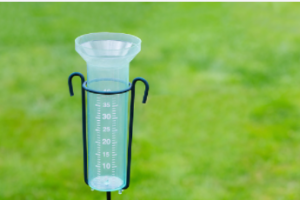A rain gauge (or an iron, a plumber, or an iron meter) is used in most land-based weather stations to measure and record precipitation over a defined period. One of the key uses for rain gauges is in rural areas dependent on agriculture to monitor droughts common in those areas. For example, in many parts of California, the rainfall is so intense that hundreds of thousands of people must be evacuated from their homes and towns. Although local weather conditions may still be unpredictable in certain areas, modern rain gauges are essential in determining the amount and type of precipitation.
 Modern rain gauges in InstrumentChoice are usually cylinder-shaped objects made out of flexible rubber or metal material. The interior surface is covered with a float of cloth or paper. If the surface has a small hole in it (as is the case when you see rain gauges in arid regions), it will display a reading of about one-tenth of an inch. If the hole in the cylinder is larger, the value will become smaller and will be displayed as zero in table 3.1.
Modern rain gauges in InstrumentChoice are usually cylinder-shaped objects made out of flexible rubber or metal material. The interior surface is covered with a float of cloth or paper. If the surface has a small hole in it (as is the case when you see rain gauges in arid regions), it will display a reading of about one-tenth of an inch. If the hole in the cylinder is larger, the value will become smaller and will be displayed as zero in table 3.1.
To use the rain gauge properly, one must make sure that the device’s base is located where it can gain maximum coverage of its measuring area. It means that it has to be above the level ground. This fact is highlighted by the fact that farmers in many regions must record the rainfall and use this data to determine the amount of water that their fields should receive. Similarly, the use of rain gauges in various forms has led to improvements in crop production.
The base is prepared to install the rain gauge by driving a long, thin metal rod into the earth. A small hole is then cut in the top of the cylinder, and a comprehensive piece of plastic or paper is inserted inside. Next, the measuring stick is inserted into the hole, and the top of the cylinder is lined with a small layer of soil. The next step is to insert the measuring stick into the open end of the gauge. This process is called soil augmentation.
To measure precipitation, the farmers need to make several measurements. The first measurement, known as the rain gauge, takes place at about three hundred meters above the level ground. Farmers are required by law to keep track of precipitation levels using this gauge. A second measurement also made at an elevation of about three hundred meters above the level ground is required to obtain an accurate rain gauge. This second measurement is the depth of the “baskets” that are used to catch rainwater.
Today, measuring rainfall is no longer a challenge for farmers. Most modern rain gauges are highly sophisticated and can even predict the correct amount of rain that will fall. Along with proper equipment, farmers can now obtain reliable information from their rain gauges that will allow them to plan their water conservation practices. By utilizing rain gauges in InstrumentChoice to measure rainfall and create water conservation programs, farmers ensure their productivity and conserve resources.